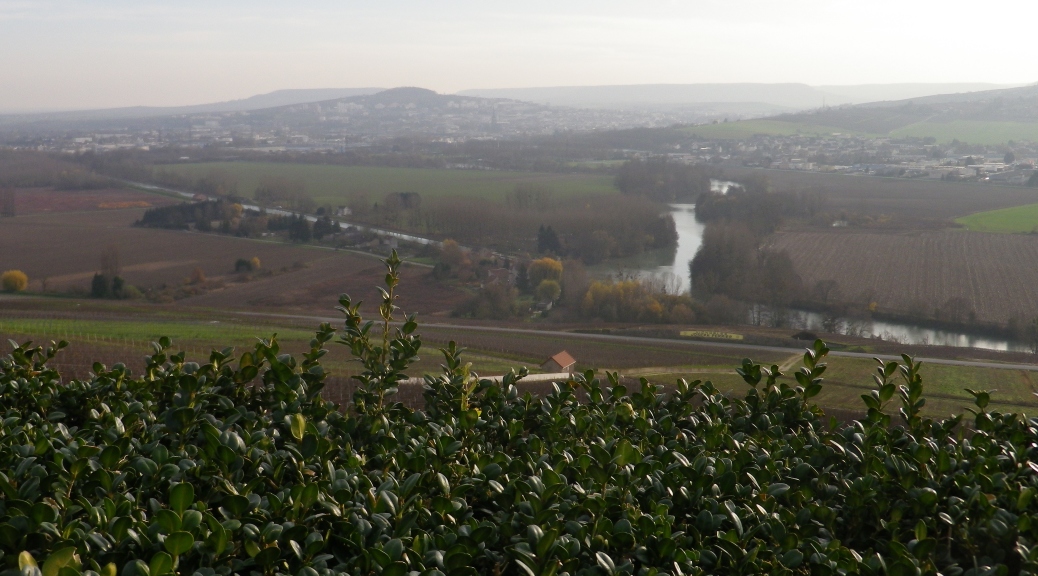I made a pilgrimage to Hautvillers. Champagne was born there, as anyone who loves sparkling wines as much as I do will know. Sooner or later, serious champagne aficionados will want to visit to pay their respects to the life’s work of Dom Perignon, a monk dedicated to studying and producing good local wines.
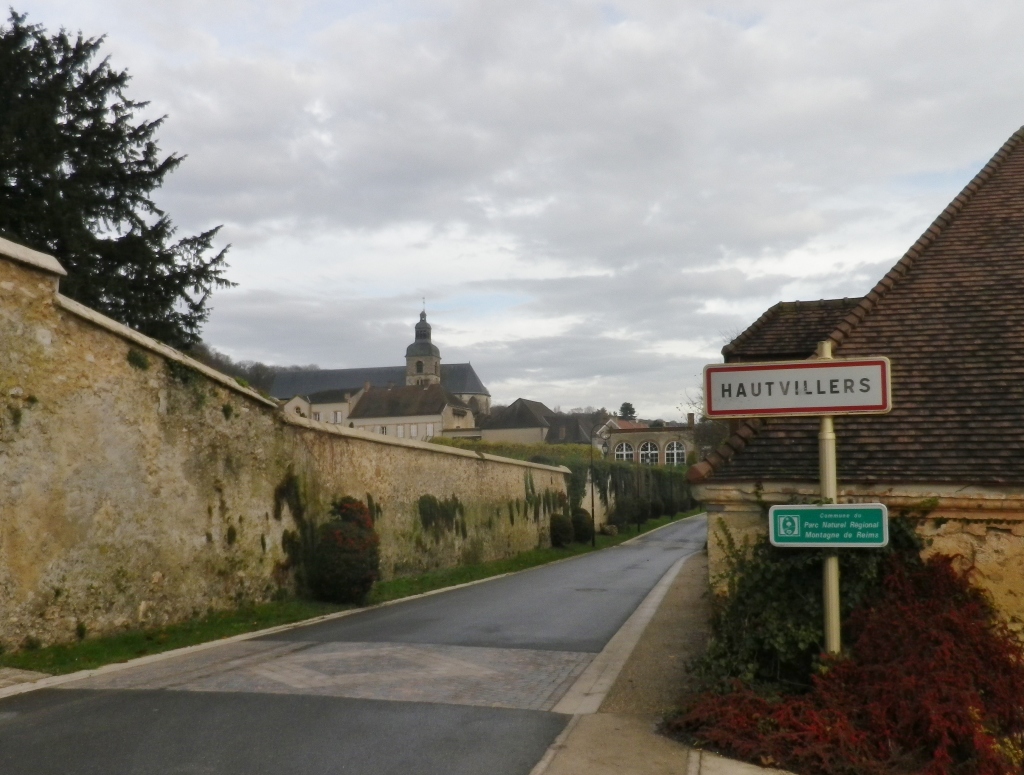
A local circuit trail, the Circuit of Saint Mark, provides the opportunity to do just that. It begins in the heart of Hautvillers. Set high above the Marne River on the Mountain of Reims (Montagne de Reims), the village faces south, toward the Marne, and toward Epernay on the far side of the river. Although Hautvillers has a big reputation, it is a small village, with winding streets, and even narrower alleyways, connecting different sections of the village. One of the chief attractions of Hautvillers, aside from the champagne, is the signage over businesses. Done artistically in wood or metal, they clearly indicate the profession of the buildings inhabitants. Not surprisingly, most of the signs denote some connection to wine-making.
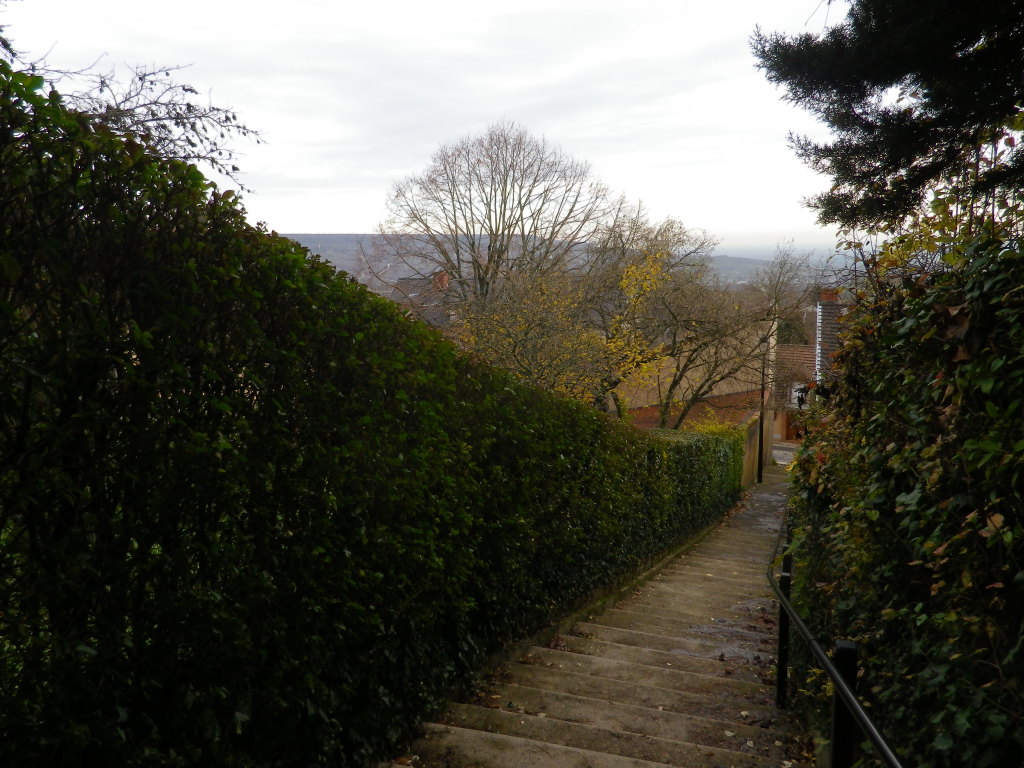
The circuit proceeds to the edge of Hautvillers. On the trail at the eastern edge of the village, is the pilgrimage site: the Abbey of Saint Pierre. Dating originally to the seventh century, it had already existed for a thousand years before Dom Perignon arrived. This is the abbey complex where he lived and worked for decades as the cellar master in the seventeenth century. While not possible (for casual hikers) to visit his former cellars, it is still possible to visit the church where Dom Perignon would have spent several hours a day. And there, under a stone placed in front of the main altar, he still lies today.
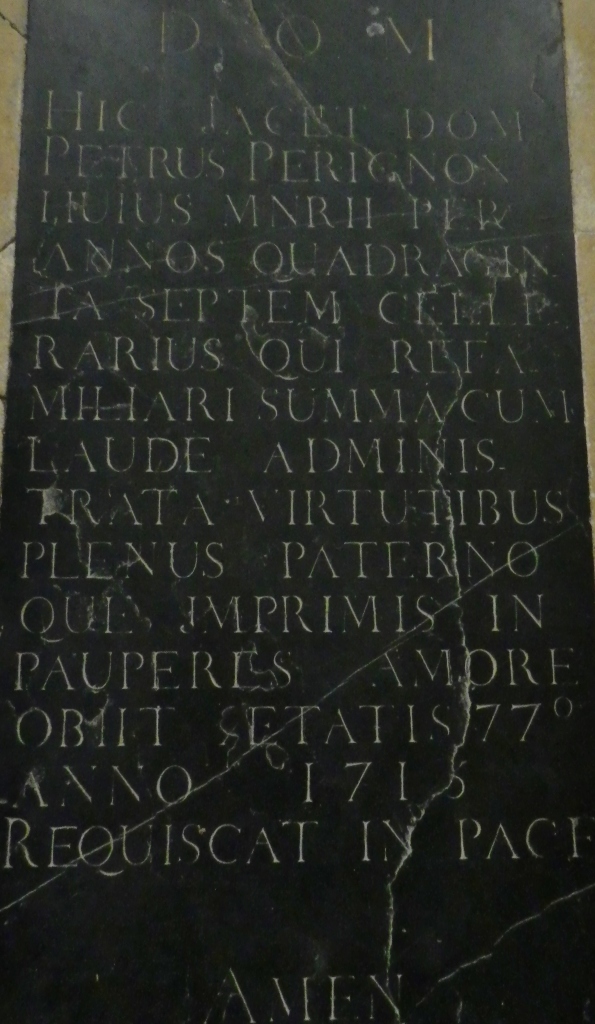
The trail also passes through the many vineyards outside the village. This part of the circuit provides ample opportunity to appreciate the view of the Marne River valley, as well as the sheer scope of viticulture in this region. Vines stretch in all directions below the trail, almost as far as the eye can see, interrupted only by the occasional town or village.
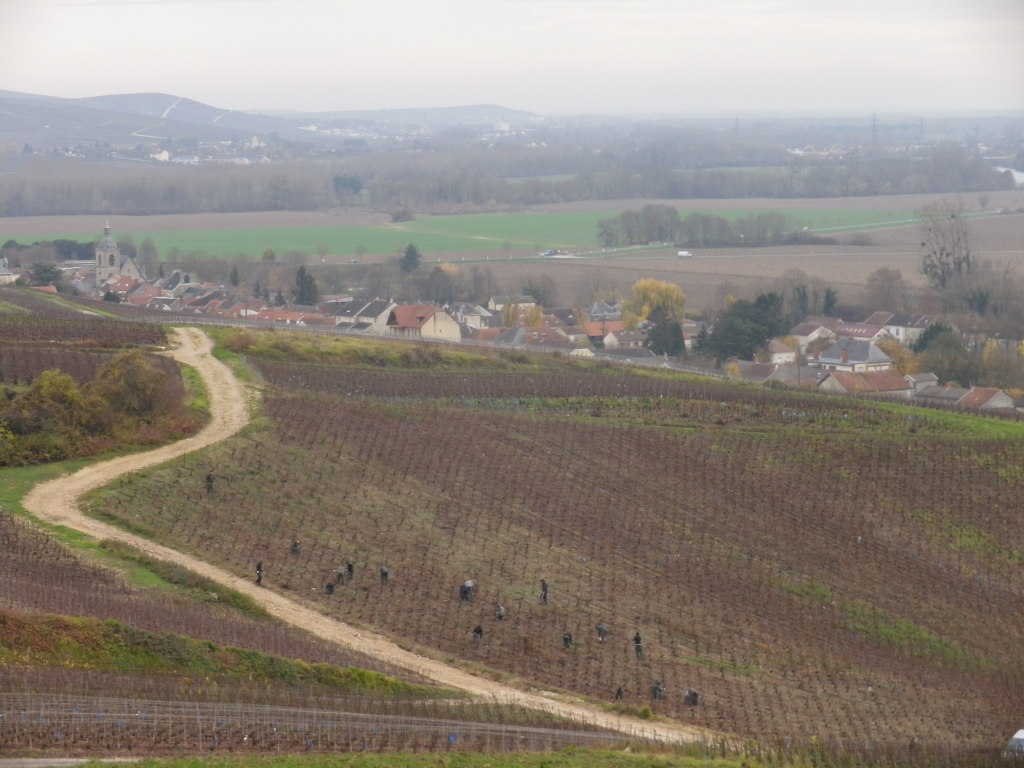
But above all the vineyards, and the village, is the Forest of Saint Mark. The Mountain of Reims has perhaps the largest contiguous forest for miles around, the rest of the acreage in this area being devoted to the cultivation of the vine. Not surprisingly, the tree line begins at the point where vines won’t grow. Looking for all the world like a green crown atop the Mountain of Reims, this part of the hike is quiet, and would provide shade in the summer.
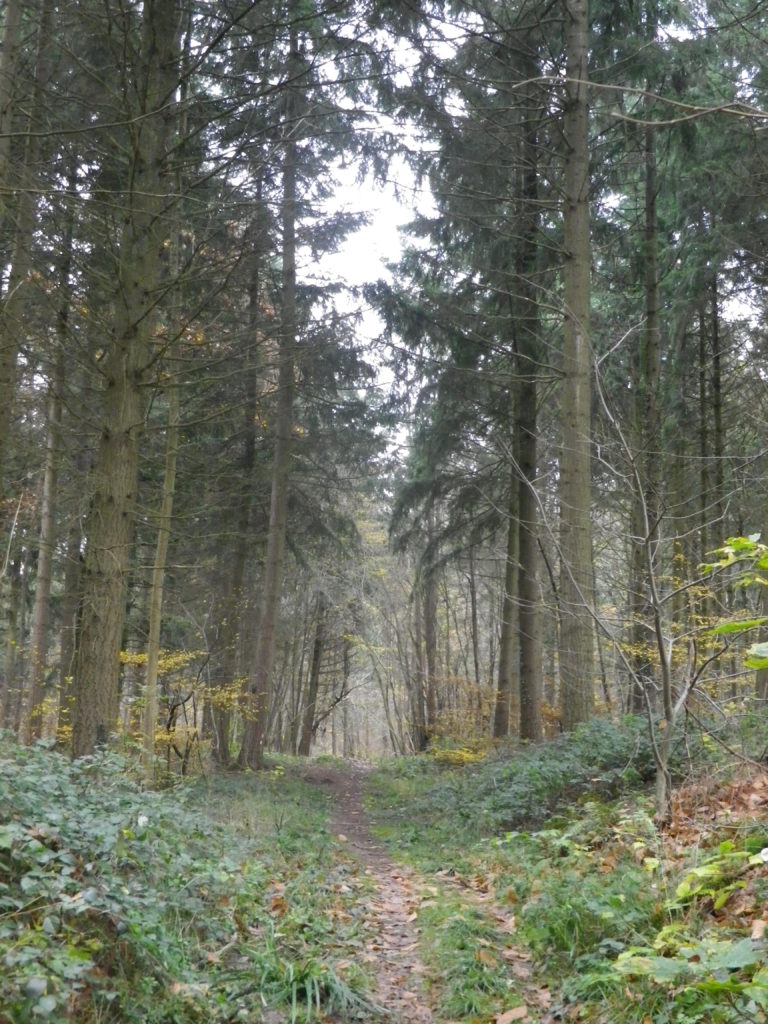
In effect, all these areas would have been well known and uniquely appreciated by Dom Perignon. Hiking along the trail, tramping the same ground he did, gave me an appreciation of the work he did in this cool, often foggy and rainy, hilly terroir, covered by chalky soil. It also heightened my already considerable appreciation of champagne, and more importantly, offered me yet more opportunities to appreciate the champagnes of smaller houses’ champagne production, in the heart and soul of champagne country.
